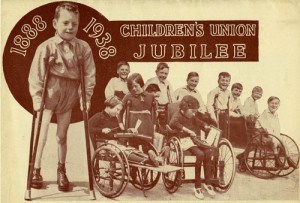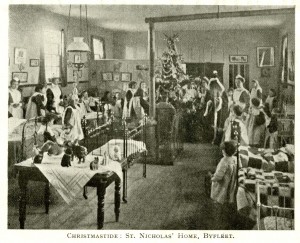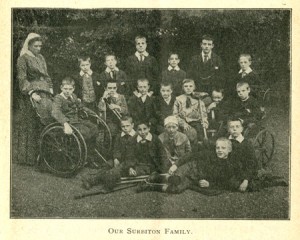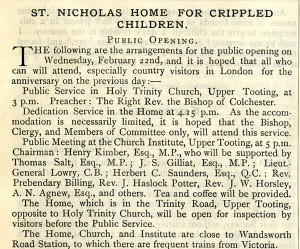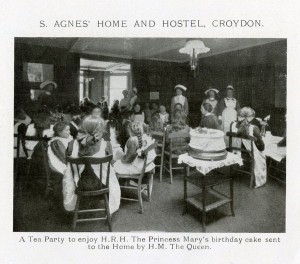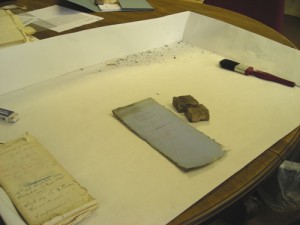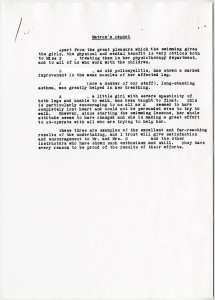While working with historical records relating to disabled children, it is very hard not to come across attitudes and phrases that can seem discriminatory and relatively demeaning when set alongside 21st Century standards and attitudes.
When reading these records, it is necessary to keep in mind that these were attitudes and phrases that were common in their day and were unlikely to have been seen as discriminatory by those using them. The records act as a body of evidence for how society saw disabled children in the past and how much has changed for the better in the intervening years.
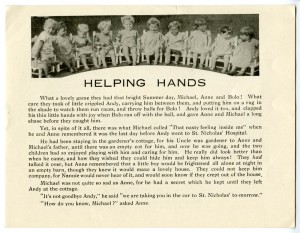
In the above example, we have a page from a story booklet for children that was produced in c1930 by the Children’s Union. This booklet was created to teach children about the work of St Nicholas’ Home for disabled children in Pyrford, Surrey, with the aim of persuading them to donate money to the home.
The first thing that we come across in this example is the use of the word “crippled”. This term was very common in the 19th and early-20th Centuries and crops up very often in our records relating to disabled-children’s homes.
Secondly, when reading through this first part of the story, we begin to get a perception of how disabled children were seen at the time. Andy, the disabled boy, is described in a way that emphasises vulnerability and helplessness, with the aim of provoking a feeling of pity in the reader. Language like this is found in a lot of early publicity material for the Children’s Union; this material often talks about the disabled children being unfortunate and needy. Presumably, urging the public to feel pity was seen as a good way of motivating them to donate money for the disabled-children’s homes.
It is also clear that the focus at the time was very much on the medical model of disability and orthopaedic care. Disabled children’s homes often doubled as hospitals and were seen as places to treat medical conditions. The aim of the Children’s Union, as stated later in the above story, is to “help poor ill children, and make them well and strong”. Children with disabilities that could not be treated medically and children that were not able to learn a trade, were often seen as a group of people for whom nothing could be done; an unfortunate perspective.
As the 20th Century moved on, attitudes towards disability began to change toward a more social model, and we can see this reflected in the records.

Above is a page from a prospectus for Halliwick Further Education and Training Centre in Winchmore Hill, London, made c1980. While this prospectus also uses terms that are no longer common today, we can see that the attitude towards disability was quite different from that in the earlier document. The aim of the Centre was no longer about medical treatment to remove disabilities that were seen as obstacles. Instead, the aim of the Centre was to provide further education that was tailored and accessible to the disabled students, to provide them with the same opportunities for education as non-disabled children.
Examples like those above allow us to see how attitudes towards disability have changed over the years to become what they are now. I think it is very important that these records are preserved for the future and not hidden from history purely because they contain phrases that can be seen to be discriminatory or, indeed, offensive. After all, it is only by learning how things were that we can understand why and how things needed to change and where we need to go in the future.

